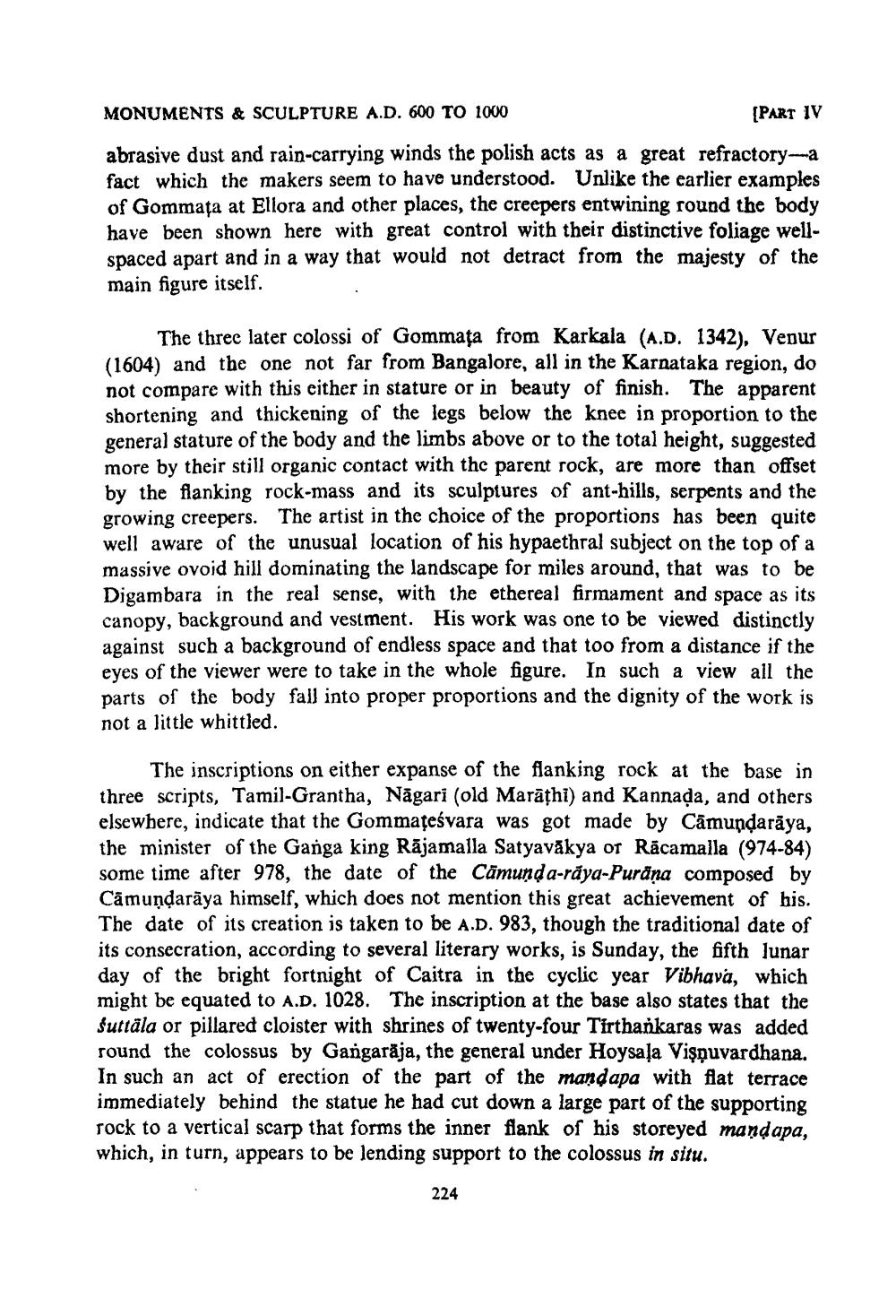________________
MONUMENTS & SCULPTURE A.D. 600 TO 1000
[PART IV
abrasive dust and rain-carrying winds the polish acts as a great refractory-a fact which the makers seem to have understood. Unlike the earlier examples of Gommata at Ellora and other places, the creepers entwining round the body have been shown here with great control with their distinctive foliage wellspaced apart and in a way that would not detract from the majesty of the main figure itself.
The three later colossi of Gommata from Karkala (A.D. 1342), Venur (1604) and the one not far from Bangalore, all in the Karnataka region, do not compare with this either in stature or in beauty of finish. The apparent shortening and thickening of the legs below the knee in proportion to the general stature of the body and the limbs above or to the total height, suggested more by their still organic contact with the parent rock, are more than offset by the flanking rock-mass and its sculptures of ant-hills, serpents and the growing creepers. The artist in the choice of the proportions has been quite well aware of the unusual location of his hypaethral subject on the top of a massive ovoid hill dominating the landscape for miles around, that was to be Digambara in the real sense, with the ethereal firmament and space as its canopy, background and vestment. His work was one to be viewed distinctly against such a background of endless space and that too from a distance if the eyes of the viewer were to take in the whole figure. In such a view all the parts of the body fall into proper proportions and the dignity of the work is not a little whittled.
The inscriptions on either expanse of the flanking rock at the base in three scripts, Tamil-Grantha, Nāgari (old Marāthi) and Kannada, and others elsewhere, indicate that the Gommateśvara was got made by Cāmundaraya, the minister of the Ganga king Rājamalla Satyavákya or Rācamalla (974-84) some time after 978, the date of the Cāmunda-raya-Puräna composed by Câmundarāya himself, which does not mention this great achievement of his. The date of its creation is taken to be A.D. 983, though the traditional date of its consecration, according to several literary works, is Sunday, the fifth lunar day of the bright fortnight of Caitra in the cyclic year Vibhava, which might be equated to A.D. 1028. The inscription at the base also states that the futtala or pillared cloister with shrines of twenty-four Tirthankaras was added round the colossus by Gangarāja, the general under Hoysaļa Vişnuvardhana. In such an act of erection of the part of the mandapa with flat terrace immediately behind the statue he had cut down a large part of the supporting rock to a vertical scarp that forms the inner flank of his storeyed mandapa, which, in turn, appears to be lending support to the colossus in situ.
224




